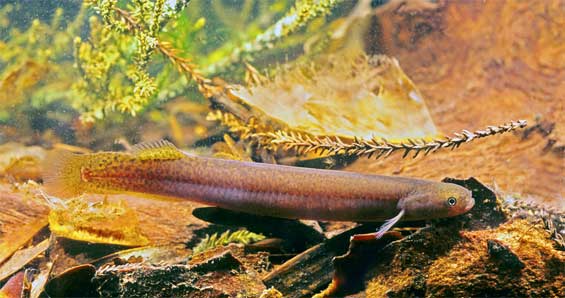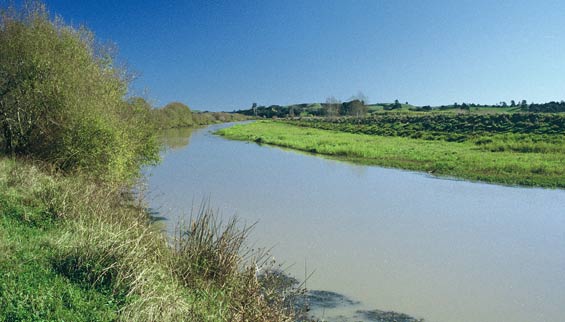The black mudfish can be found in Waikato, along with Auckland and Northland. It is unique to New Zealand and found nowhere else in the world.
Once widespread, they have disappeared from many areas in the lower Waikato and Hauraki Plains, mostly due to widespread loss of habitat (at least 75% of Waikato wetlands have been drained), invading pest fish and reduced water quality.
Black mudfish have a conservation status of At Risk–Declining under the NZ Threat Classification System.

Black mudfish
Survival skills
Like other mudfish species, black mudfish have a number of very unusual adaptations for the wetlands and peat lakes in which they live. They can survive out of water, sometimes for several months, when their wetland habitat dries out over summer, as long as they are kept moist by burrowing under tree roots or into mud or damp leaf litter.
During this time, black mudfish slowly lower their metabolism, reducing the amount of energy they need to live (in a similar way to hibernating bears, and sometimes known as 'aestivation' in mudfish), but immediately wriggle into life when water returns.
Their skin is coated in tear-like mucus, which helps keep them moist out of water and also protects the fish against infection, and they absorb oxygen through their skin.

Black mudfish populations can be found at Whangamarino Wetland in Waikato
Threats
Despite these clever adaptations, black mudfish have very specific habitat requirements, and are particularly vulnerable to habitat loss, pest fish and water quality decline.
How you can help
Here are some things to do to keep black mudfish in the Waikato:
- Fence stock out of waterways.
- Plant harakeke/flax and native sedges like carex and toetoe (not pampas) along stream banks and drains. Vegetation rooted in shallow water in and around farm drains helps provide black mudfish with shelter and food and reduces the water temperature, retaining moisture which is essential for mudfish survival.
- Clear farms drains less frequently, retaining vegetation to provide habitat and shade. Use a digger-arm to protect drain-side vegetation.
- Protect wetlands on your property. As well as being mudfish habitat, wetlands filter farm run-off and help keep the streams clean.
- Create a farm management plan that includes nutrient budgeting, effluent disposal and sustainable peatland management. You can get help with creating farm management plans from the Waikato Regional Council, DairyNZ and NZ Landcare Trust.